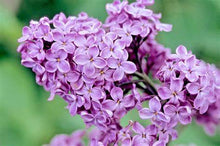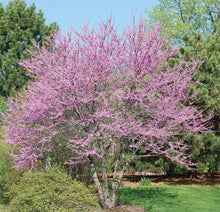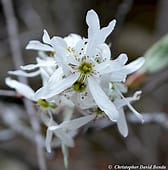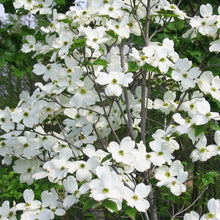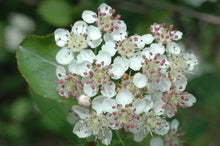
Assortment of native and cultivated flowering shrubs that will add beauty to any sized property. Provides flowers for pollinators and fruit for other wildlife. Two of each species. (10 total trees/pack)
12-18" Redbud - Pink to reddish purple flowers are grown on old twigs, branches, and trunks. Flowering occurs in March to May before leaf growth. After bloom, the leaves begin growing and gradually turn dark green. Grows 15 to 30 feet tall and spreads 15 to 25 feet. Grows best in moist loam or sandy soils. Attracts hummingbirds, honeybees, deer and squirrels.
12-18" Serviceberry - Even though serviceberry species vary in size and form, most of them share a few characteristics. All of them have small, elliptical leaves with fine teeth along the edges. Most species bloom in spring with five-petaled, white flowers. The flowers last only a few days and give way to juicy berries that resemble blueberries in size, color and flavor.
12-18" Common Lilac - The common lilac is an old-fashioned, long-lived, and well-loved lilac best known for its fragrant flowers. It is extremely hardy and thrives with little care which makes it a lovely shrub for a specimen planting, in masses, screens, hedges, or mixed in shrub borders. The May blooming flowers are typically purple to lilac but cultivars also come in magenta, pink and white.
12-18" Flowering Dogwood - Flowering dogwood is a small to medium woodland understory tree, native throughout most of the eastern United States. Showy white, red, or pink flowering bracts appear before the leaves in early spring. Dark green summer foliage turns a brilliant reddish-purple in fall.
12-18" Black Chokeberry - A very adaptable shrub with tolerance to a variety of soil textures, densities, pH levels and moisture conditions. In spring, it has showy white flower clusters. In autumn, leaves change from green to vibrant tones of red, orange and purple. Grows up to 8' tall and 6 ' wide. Fruit is edible but too astringent to eat raw. The high-antioxidant fruit is used in baking and to make jams, jellies, syrup, tea, juice and wine. Fruit can persist into winter and serves as a food source for birds and other wildlife.
Photo Credits: Johnson's Nursery; Arbor hill Tree Farm, The spruce; The Morton Arboretum





